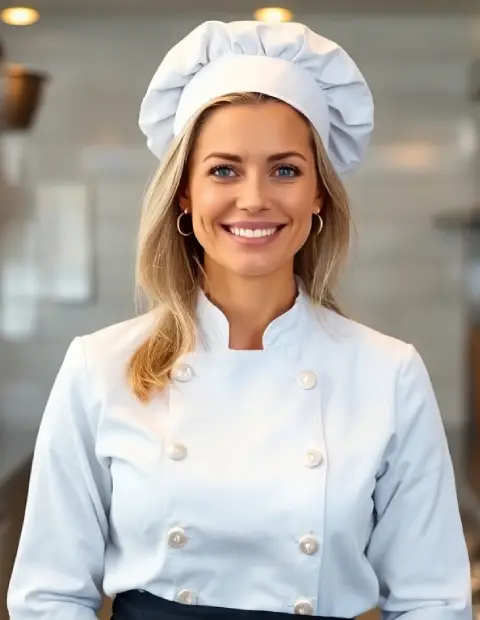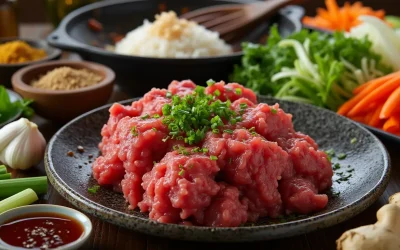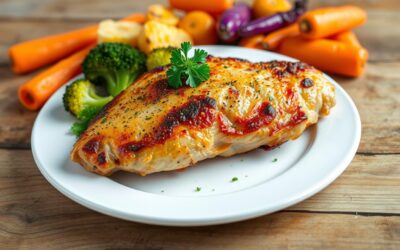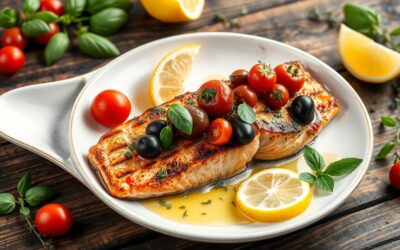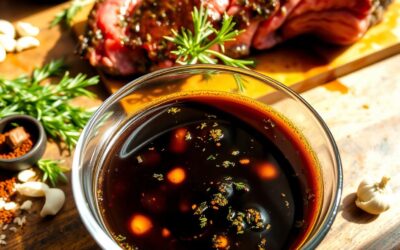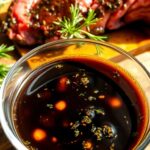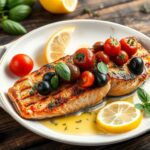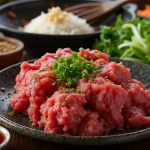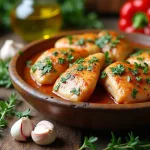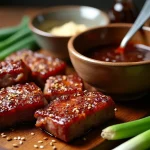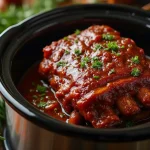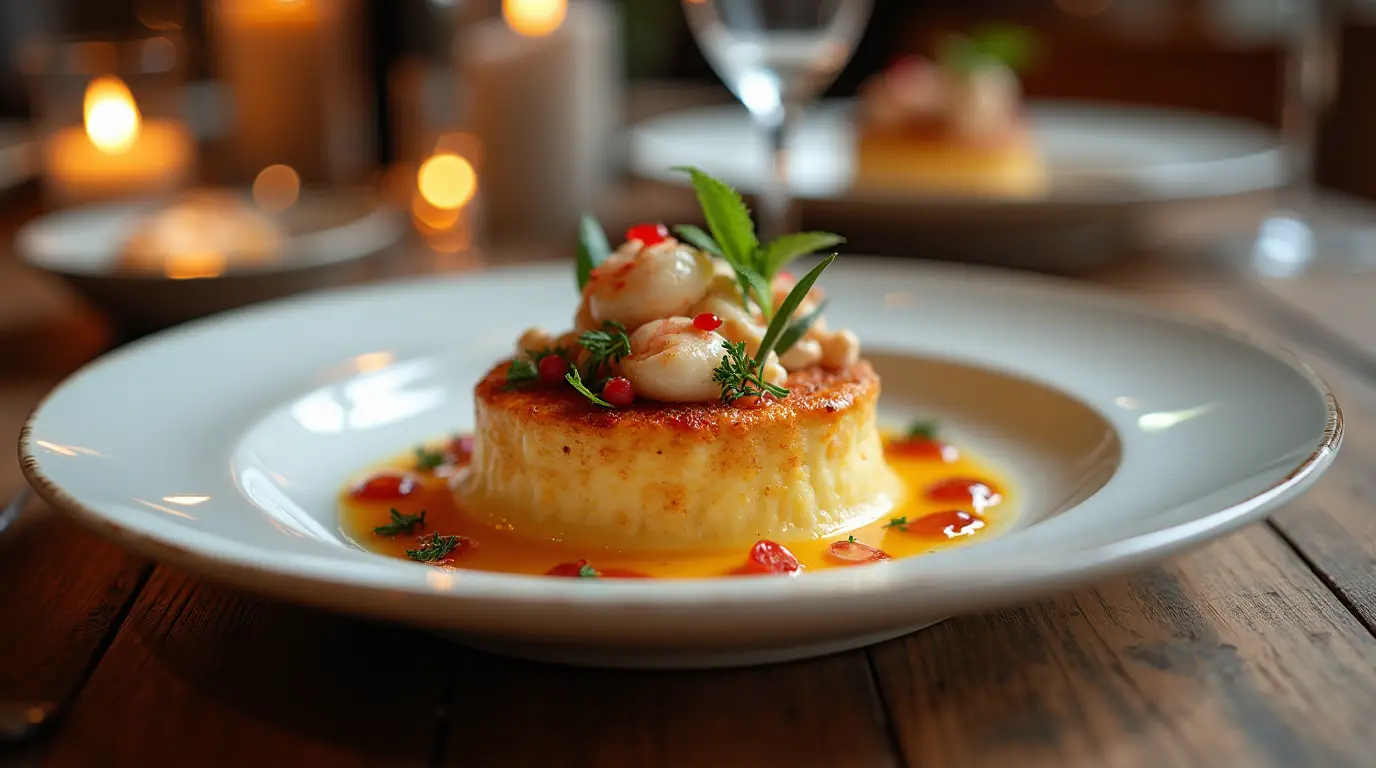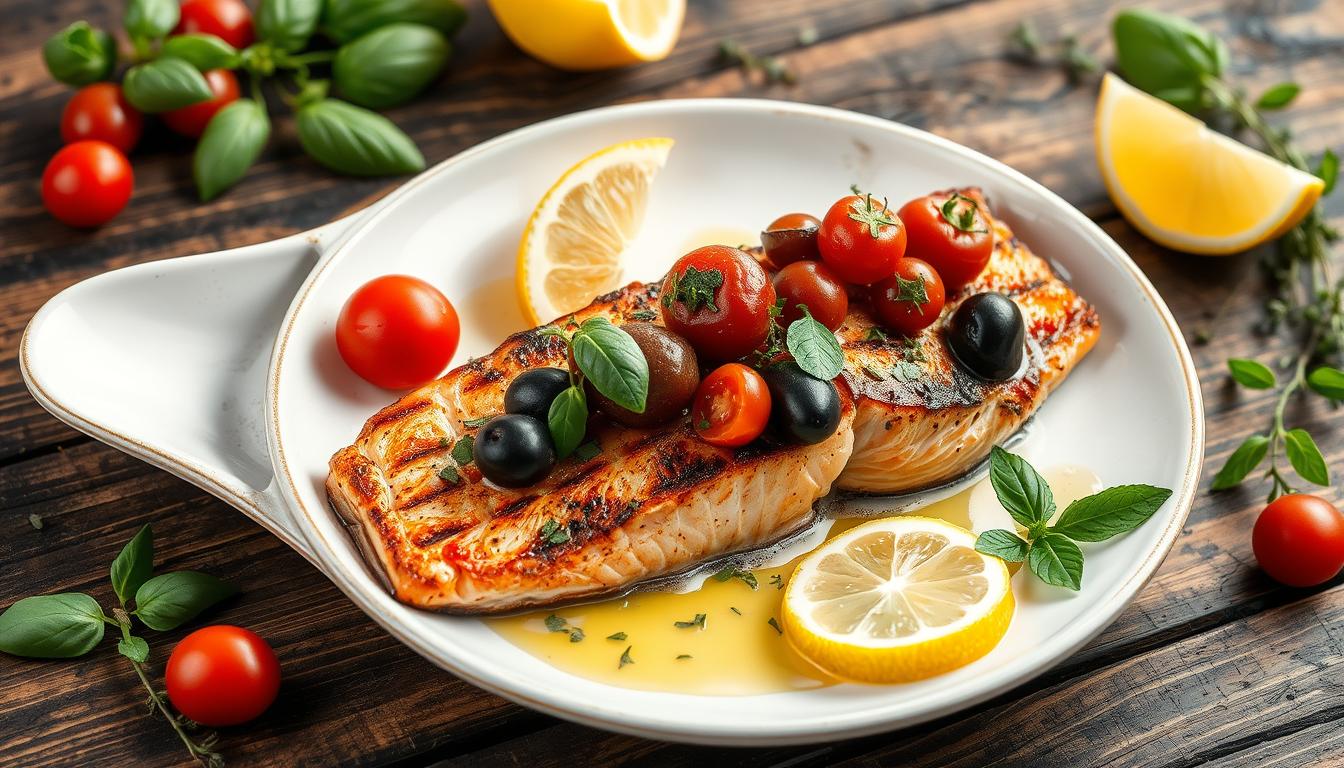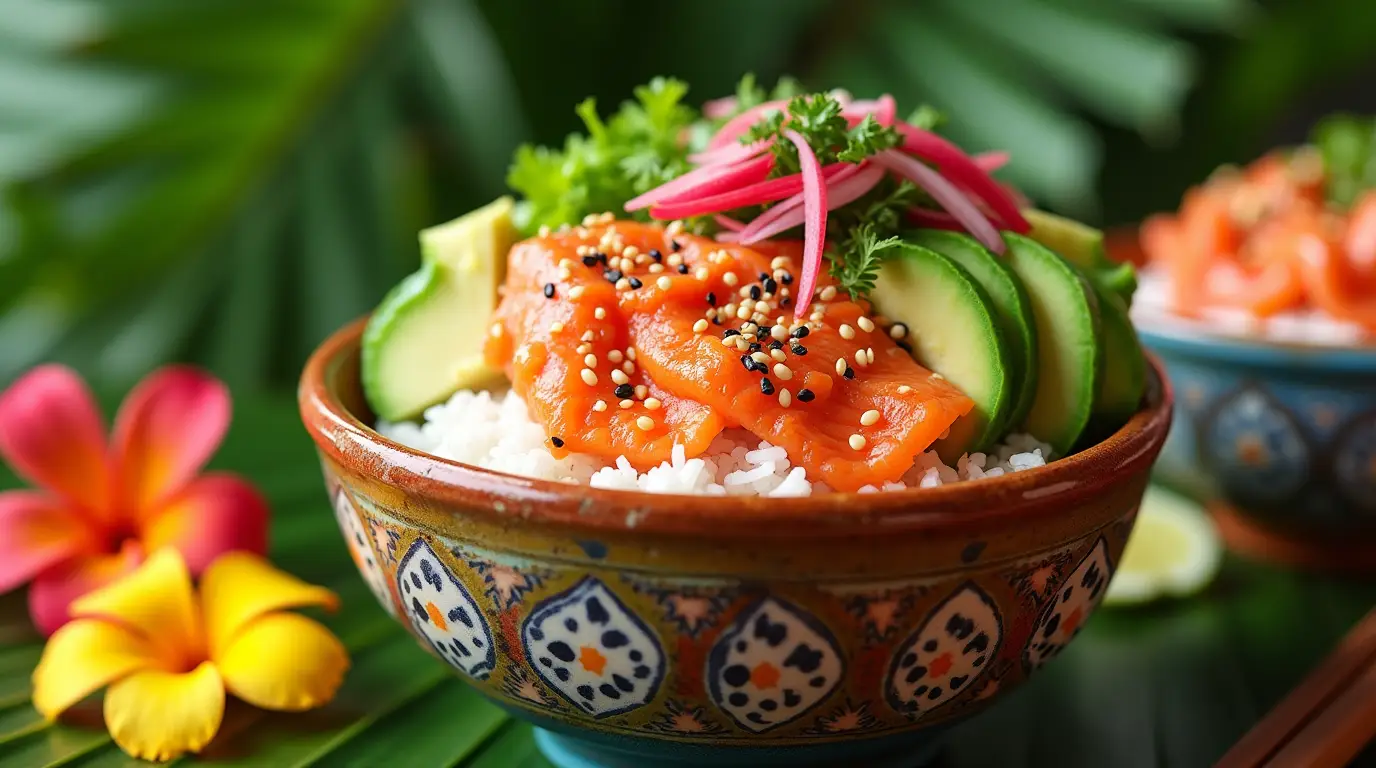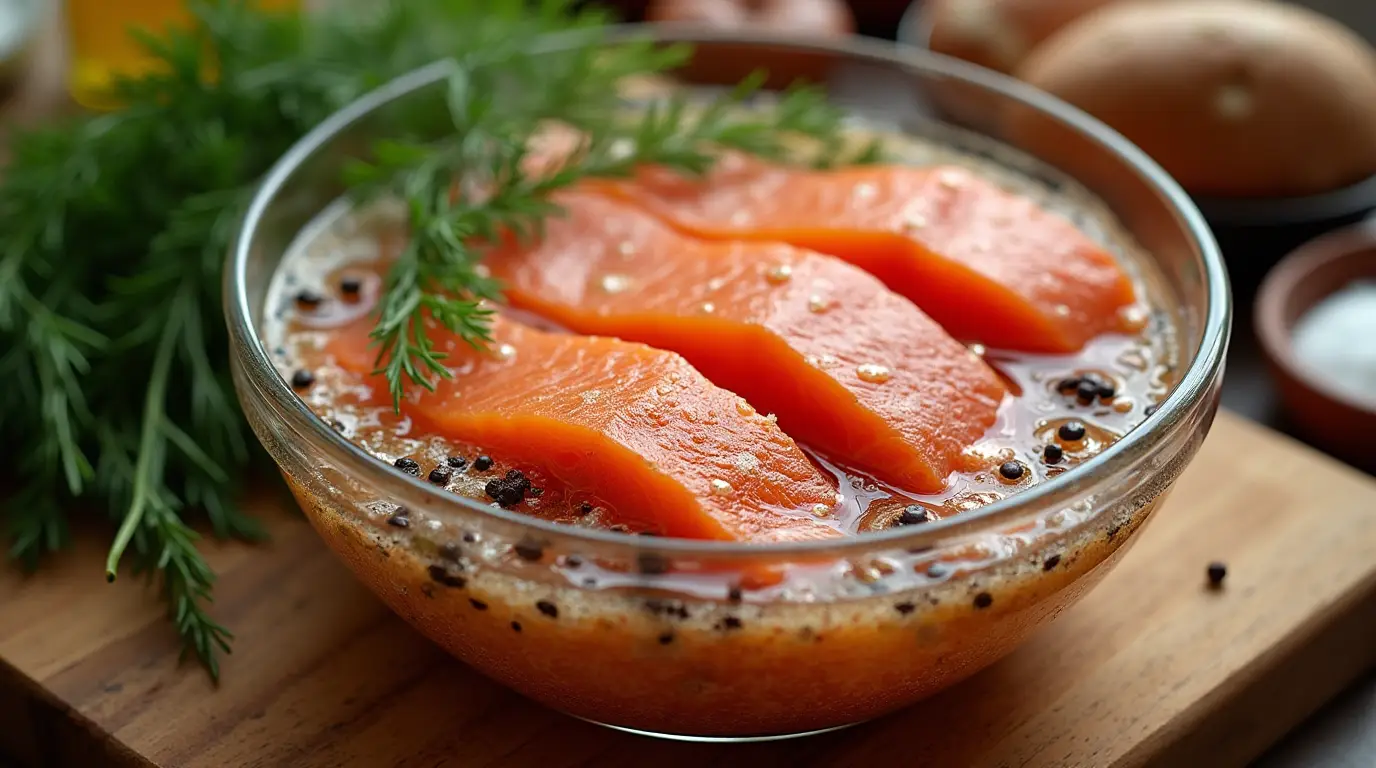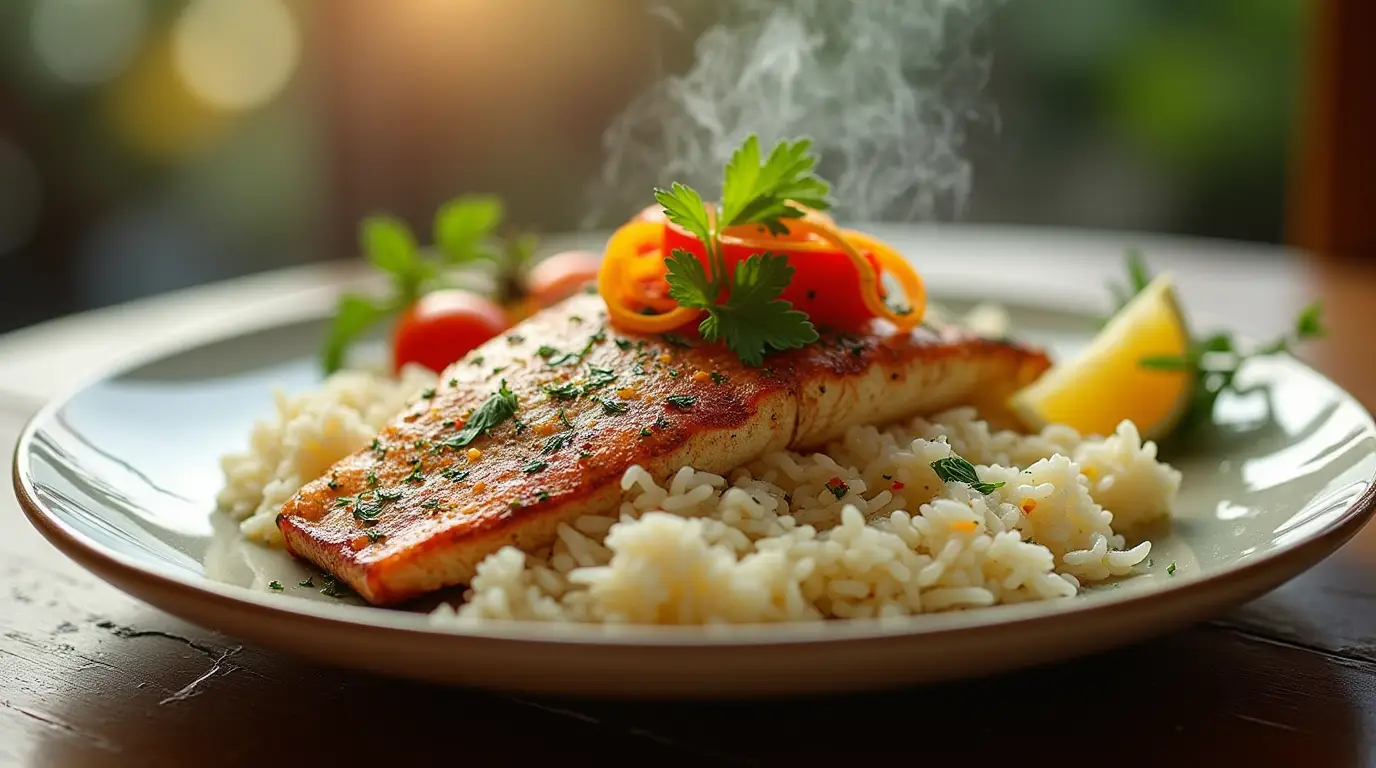Ever thought of turning a French dessert into a seafood masterpiece? The crab brulee recipe is your ticket to culinary wonder. It’s a mix of traditional French and modern flavors.
Picture this: a crunchy sugar top giving way to a smooth custard with crab. Your guests will love this fancy dish. It’s all about rich textures and flavors.
As a home cook, you’ll find making crab brulee is simpler than you think. With the right ingredients and techniques, you can make your seafood dishes stand out.
Table of Contents
Introduction to Crab Brulee: A French-Inspired Seafood Delicacy
Get ready for a culinary adventure that mixes French cuisine with seafood. Crab brulee is a unique blend of dessert techniques and savory seafood. It offers a new way to enjoy food, pushing the limits of recipes.
The art of creme brulee has always fascinated food lovers. But the seafood twist adds a whole new level of creativity. Chefs mix crab meat with custard, blending French traditions with modern cooking.
Evolution of Traditional Creme Brulee
Creme brulee started as a French dessert. Now, chefs add savory crab meat to it. This shows how old techniques can lead to new tastes.
Fusion of French and Seafood Cuisine
- Combines creamy custard texture with delicate seafood
- Utilizes classic French cooking methods
- Introduces unexpected flavor combinations
- Elevates traditional recipe techniques
Modern Interpretations and Popularity
Today, crab brulee is a fancy appetizer that surprises diners. Chefs play with crab types, seasonings, and how it’s presented. They make each dish unique.
“Crab brulee represents the perfect marriage between classic technique and modern culinary imagination.” – Culinary Innovation Magazine
| Ingredient | Quantity | Purpose |
|---|---|---|
| Fresh Lump Crab Meat | 1 cup | Primary Protein |
| Heavy Cream | 1 cup | Custard Base |
| Egg Yolks | 4 | Binding Agent |
Crab brulee is a mix of old and new in cooking. It excites food lovers and breaks new ground in the kitchen. It’s a true culinary masterpiece.
Origins and Cultural Significance
Explore the world of crab brulee, a blend of French cuisine and seafood. It started in the 18th century with chefs’ new cooking ideas. This dish comes from France’s rich food history, where chefs loved to try new things.
The crab brulee story starts with a happy accident. Chefs, inspired by crème brûlée, made a seafood version. The first crab dish recipe was in 1691 by François Massialot, starting a journey of culinary discovery.
“Necessity is the mother of invention, in the kitchen too.” – Unknown Culinary Master
Historians have followed crab brulee’s journey through key moments:
- First seen in late 17th-century French cookbooks
- Evolved from traditional crème brûlée methods
- Became popular in fancy restaurants in the 1980s and 1990s
| Historical Period | Culinary Development |
|---|---|
| 17th Century | First recorded crème brûlée recipes |
| Late 20th Century | Introduction of seafood variations |
| Modern Era | Sophisticated crab brulee interpretations |
This dish is more than a recipe. It shows the power of creativity in cooking. By mixing crab with crème brûlée, chefs made a dish that’s both French and new.
Essential Ingredients for Crab Brulee Recipe
Making a great crab brulee needs the right ingredients. It’s all about choosing the best to make a simple dish special. This turns a meal into a memorable experience.
Selecting Premium Crab Meat
Your crab brulee starts with top-notch crab meat. For the best seafood dishes, pick these:
- Lump crab meat: 150 grams of premium quality
- Fresh jumbo lump crab recommended for best texture
- Ensure meat is free from shell fragments
Dairy and Cream Components
The custard base is key in crab brulee. Your list should have:
- Heavy cream: 400 ml for rich consistency
- 2 large egg yolks
- 1 whole large egg
Flavor Enhancers and Seasonings
Add these seasonings to boost your crab brulee:
- 1/2 tablespoon pickled ginger
- 1 finely chopped garlic clove
- 2 tablespoons grated parmesan cheese
- 1/2 teaspoon salt
- 1/4 teaspoon white pepper
- 1/8 teaspoon nutmeg
“The secret to an outstanding crab brulee lies in the quality of ingredients and precise balance of flavors.”
When making seafood recipes, remember each ingredient is important. Fresh crab, rich cream, and gentle seasonings make a simple dish into a masterpiece.
Kitchen Equipment and Tools Required
To make amazing baked crab appetizers, you need the right tools. Your seafood recipes, like a crab brulee, need precision and special equipment. This is key to getting professional results.
- Professional brulee torch for perfect caramelization
- Ceramic ramekins (4-6 oz size recommended)
- Stainless steel mixing bowls (at least 3 different sizes)
- Digital instant-read thermometer
- Fine-mesh strainer
- Measuring cups and spoons
- Whisk for smooth custard preparation
- Sugar sifter for even caramel coating
“The right tools transform a good recipe into an extraordinary culinary experience.”
Choose high-quality equipment for the best results. A precise kitchen torch is essential for caramelizing sugar. Ceramic ramekins help with even heat distribution for your seafood dish.
| Tool | Purpose | Recommended Specification |
|---|---|---|
| Brulee Torch | Caramelizing Sugar Crust | Professional culinary grade |
| Ramekins | Individual Serving | White ceramic, 4-6 oz |
| Thermometer | Cream Temperature Control | Digital, instant-read |
Pro tip: Invest in high-quality tools to elevate your baked crab appetizers from home cooking to restaurant-style presentations.
Selecting and Preparing Fresh Crab Meat
Starting with the best ingredients is key to making great seafood recipes. Choosing the right crab meat is essential for your crab dishes. Fresh crab needs careful picking and preparation for a top-notch meal.
Quality Assessment Guidelines
- Look for bright, clean-looking meat with no discoloration
- Fresh crab should have a clean ocean-like aroma
- Opt for Dungeness or Blue crabs for superior taste and texture
- Check for firm, translucent meat without any signs of browning
Proper Cleaning Techniques
Professional chefs say thorough preparation is key to better seafood recipes:
- Remove all shell fragments carefully
- Pat the crab meat dry with paper towels
- Inspect for any cartilage or dark membrane
- Gently break meat into uniform chunks
Storage and Handling Tips
“The secret to exceptional crab dishes is treating the ingredients with respect and care.”
Here’s how to store crab meat for your gourmet crab preparations:
- Refrigerate immediately after purchase
- Use within 1-2 days for optimal freshness
- Store at 32-38°F in an airtight container
- Keep away from other strong-smelling foods
Mastering these techniques will make your crab brulee a standout dish.
Creating the Perfect Custard Base
Making the perfect custard base is key to a great crab brulee. The dish’s heart is its silky custard, which goes well with the crab. Getting that smooth texture is all about precision and skill.
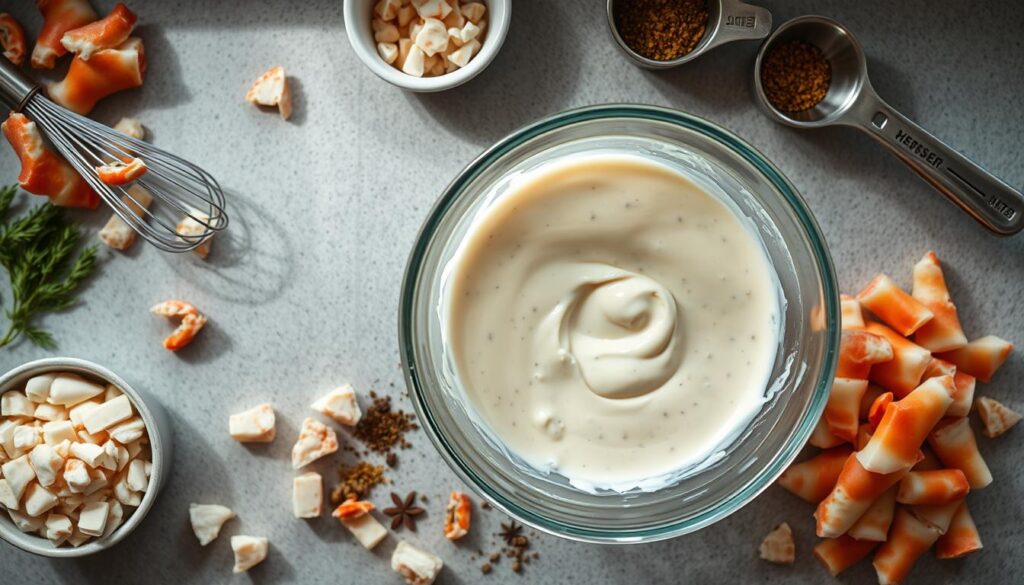
- High-quality egg yolks
- Fresh heavy cream
- Precise temperature control
- Gentle mixing technique
*The secret to a perfect custard is patience and attention to detail.*
The right mix of ingredients is vital for the perfect texture. Here’s what you need:
| Ingredient | Quantity | Purpose |
|---|---|---|
| Heavy Cream | 16 oz (300 ml) | Creates rich, smooth base |
| Egg Yolks | 3-5 | Provides creamy consistency |
| Sugar | 1/4 cup (50g) | Adds sweetness and helps set |
Tempering is a must for your custard. Slowly add hot cream to egg yolks to avoid scrambling. Strain the mix through a fine-mesh sieve for a smooth texture.
Keeping the temperature right is important. Bake at 325°F (165°C) in a water bath. This ensures even heat and prevents overcooking. The custard should be set but slightly wobbly in the middle.
Temperature Control and Baking Techniques
Mastering the baking techniques for your crab brulee recipe is key to perfect seafood appetizers. The right temperature and method can make your baked crab appetizers stand out.
Optimal Oven Settings
For your seafood recipes, precise oven temperature is essential. For an exceptional crab brulee, set your oven to 325°F (163°C). This temperature ensures the custard cooks evenly and gently.
- Preheat the oven completely before placing ramekins inside
- Use an oven thermometer to verify accurate temperature
- Position rack in the center of the oven for consistent heat distribution
Water Bath Methods
The water bath technique is vital for a smooth, creamy crab brulee. It prevents direct heat from causing curdling or uneven cooking.
- Select a baking dish at least 2 inches deep
- Place ramekins in the dish
- Pour hot water until it reaches halfway up the ramekin sides
- Carefully transfer to the preheated oven
Timing and Doneness Indicators
Cooking time for your crab brulee is usually 25-30 minutes. Look for these signs to know when it’s done:
- Slight jiggle in the center when gently shaken
- Custard should be set but not completely firm
- Edges should appear slightly puffed
“Patience is the secret ingredient in creating the perfect crab brulee” – Culinary Experts
After baking, let your crab brulee cool on a wire rack for 20 minutes. Then, refrigerate it for at least 30 minutes before serving. This helps the custard set and develop its luxurious texture.
Mastering the Caramelization Process
Creating the perfect caramelized top for your crab brulee recipe is an art. It turns elegant seafood starters into a culinary masterpiece. The final step of caramelization needs precision and technique. This is to achieve that signature golden-brown crust that cracks beautifully with each spoon.
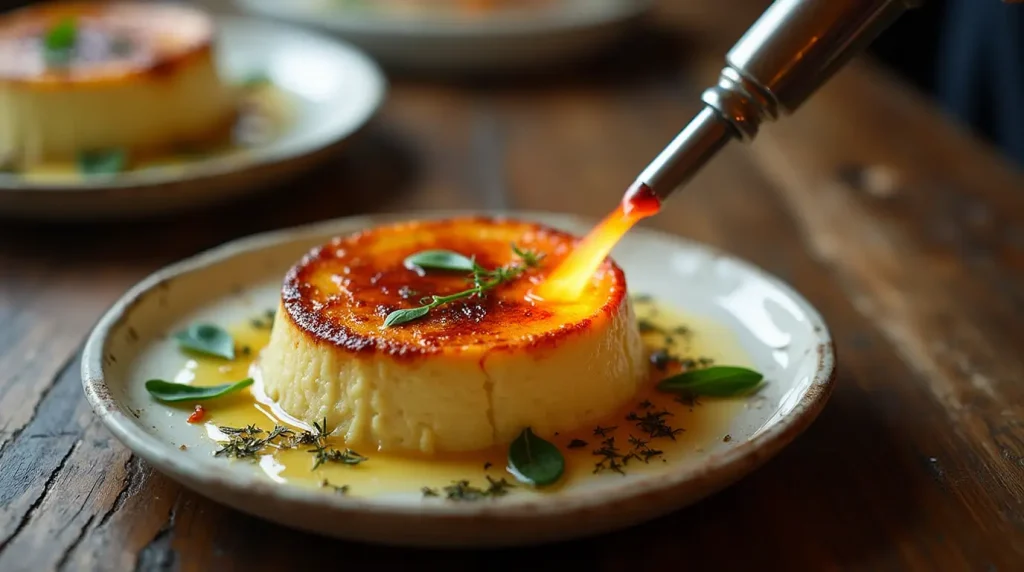
When preparing creme brulee variations, sugar selection is critical. You’ll want to choose between several options:
- Granulated white sugar
- Demerara sugar
- Turbinado sugar
For the most consistent results, light brown sugar works exceptionally well. Measure out 1½ tablespoons of sugar for each 4-ounce ramekin.
“The magic is in the torch technique – patience and consistency are key to perfect caramelization.”
Kitchen torch technique requires careful approach. Hold the torch 2-3 inches from the sugar surface and move in consistent, circular motions. This ensures an even golden-brown color without burning the delicate custard underneath.
| Sugar Type | Caramelization Characteristics |
|---|---|
| Granulated White Sugar | Quick melting, crisp texture |
| Demerara Sugar | Deeper caramel notes, slightly slower melting |
| Turbinado Sugar | Rich flavor, larger crystals |
Pro tip: For those without a kitchen torch, you can carefully caramelize sugar under a broiler. Watch closely to prevent burning!
Professional Plating and Presentation
Turning your gourmet crab dishes into masterpieces starts with presentation. Crab brulee, with its elegant seafood starters, needs to look as good as it tastes.
Garnishing Elements
Boost your crab dishes with the right garnishes. These add to the seafood’s delicate flavor. Here are some elegant garnish ideas:
- Sprinkle of smoked paprika for color and depth
- Fresh herb garnish with chives or parsley
- Delicate lemon wedge for brightness
- Micro greens for sophisticated texture
Serving Suggestions
Getting the serving temperature right is key for your crab brulee. Serve it right after caramelizing. This keeps the contrast of temperatures and textures perfect.
| Serving Recommendation | Details |
|---|---|
| Ideal Serving Temperature | Warm custard, crisp sugar topping |
| Recommended Plating | White ceramic ramekin |
| Portion Size | 4-6 oz per serving |
Photography Tips
Use professional food photography to showcase your dish. Natural light, white plates, and focus on the caramelized sugar’s golden sheen are key.
“Great food photography tells a story before the first bite is taken.”
Your crab brulee presentation should show off its gourmet seafood starter status. It turns a simple recipe into a stunning visual experience.
Troubleshooting Common Issues
Making the perfect crab brulee can be tough, even for experts. Knowing common problems helps you avoid them. This way, you can impress your guests with a flawless dish.
Custard Consistency Problems
When making seafood recipes, custard issues are common. Here are some tips to fix them:
- Runny Custard: This is usually from baking too little. Make sure your oven is at 325°F (160°C) and bake for 35-40 minutes.
- Curdled Texture: This happens when it gets too hot. Keep the water bath gentle and take it out when it jiggles a bit in the middle.
- Too Firm Custard: Bake it for less time and check your oven’s temperature.
Caramelization Challenges
Getting the caramel top right is key in your crab brulee recipe:
- Use superfine sugar for even caramelization
- Keep your kitchen torch 2-3 inches away
- Make sure the surface is dry before caramelizing
“Mastering the caramel top is an art that separates amateur cooks from professionals.” – Culinary Expert
Pro tip: About 30% of new cooks face custard issues. By following these tips, you’ll make better seafood recipes.
Storage and Preservation
For the best results in your creme brulee, follow these storage tips:
- Keep it in the fridge at 40°F (4°C) or below
- Eat it within 48 hours
- Don’t store it after caramelizing
By knowing these tips, you can turn your crab brulee into a standout dish.
Conclusion
Your journey into gourmet crab preparations has come to an end. The crab brulee recipe is more than a dish; it’s a celebration of creativity and precision. You’ve learned to mix simple ingredients into an elegant seafood starter.
Trying out this recipe shows off your kitchen skills. It’s perfect for dinner parties or impressing food lovers. You’ve picked up techniques like temperature control and caramelization. Adding your own touches, like wine pairings or fresh herbs, makes it special.
Keep improving your crab brulee skills and try new things. Each dish is a chance to grow your culinary skills. Mastering this dish is as rewarding as enjoying the delicious outcome.
We encourage you to share your crab brulee stories and creations. Your kitchen is a place to express yourself. Use this recipe to create, enjoy, and inspire others with your cooking.

